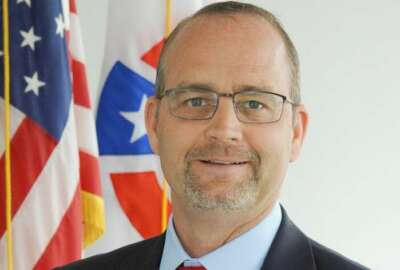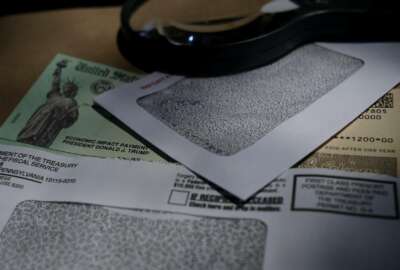Pandemic oversight board to preserve data analytics tools beyond its sunset date
The PRAC, which will continue to operate until the end of September 2025, is learning its own lessons overseeing more than $5 trillion in COVID-19 spending.
The Pandemic Response Accountability Committee got started last year borrowing on what worked more than a decade earlier, when the Recovery Accountability and Transparency Board oversaw more than $480 billion in stimulus spending following the 2008 recession.
But the PRAC, which will continue to operate until the end of September 2025, is learning its own lessons overseeing more than $5 trillion in COVID-19 spending.
Aside from the PRAC overseeing more than six times more stimulus spending than what Congress authorized to recover from the 2008 recession, speed and urgency also factored into how agencies administered COVID-19 programs.
In light of these circumstances, the PRAC, in a report issued last month, documented five main takeaways from how agencies disbursed pandemic spending:
- Self-certified information needs to be validated before payments are sent
- Prioritize funding for underserved communities
- Use existing federal data sources to determine benefits eligibility
- Recipients and administrations need timely and clear guidance to get benefits out efficiently and accurately
- Recipients of relief funds should be fully disclosed to the public
Former PRAC Deputy Executive Director Linda Miller, now a principal with Grant Thornton, said the urgency of pandemic relief put that spending at a higher risk of fraud, waste and abuse.
“Recovery spending was to try to recover from a recession, and it was a lot of shovel-ready construction projects that had timeframes that were well-established. This was disaster aid, this was more similar to a post-disaster, like a hurricane. Money quickly went out the door, and disaster aid is inherently riskier, because you’re in a situation where, because people are in dire circumstances, you’re willing to lower the guardrails when it comes to controls, and people are more likely to exploit that bad situation to take advantage of unwitting recipients,” Miller said.
PRAC Executive Director Robert Westbrooks told the Federal Drive with Tom Temin that the speed of payments also made it difficult for agencies to prioritize funding for underserved communities.
The Small Business Administration, for example, was supposed to collect demographic data and prioritize underserved communities as part of the Paycheck Protection Program, but its inspector general found the agency wasn’t initially meeting those goals.
SBA, however, made underserved businesses a priority in subsequent rounds of PPP spending.
“The initial rules were first come, first served. Well, that certainly gives the advantage to folks that have established relationships with national lenders that were responsible for most of the PPP loans and it disadvantages underserved communities,” Westbrooks said.
PRAC seeks to preserve data analytics tools
The PRAC, however, is ensuring it does something that didn’t happen under the Recovery Board — make sure its library of data sets and analytics tools still have a home beyond its sunset date.
Miller said the PRAC plans to turn its Pandemic Analytics Center of Excellence (PACE) over to the Council of the Inspectors General on Integrity and Efficiency, ensuring that the committee has a “lasting impact” after it disbands in 2025.
The Recovery Board didn’t find a permanent home for its Recovery Operation Center (ROC), which resulted in the loss of analytical capabilities once the board disbanded in 2015.
“For many of us in the oversight community, we wanted Treasury or somebody to take over the ROC, because here was all this existing infrastructure, a lot of data was already there, but nobody really had the interest or the funding to take it over. And so we wanted to make sure, when we started the PRAC, that we were not going to have a similar situation,” Miller said.
The Government Accountability Office found the Treasury Department had the authority to receive ROC assets after the Recovery Board sunset date. But GAO said Treasury had no plans to transfer ROC’s hardware and software assets, “citing cost, lack of investigative authority, and other reasons.”
“While OIGs with the financial resources to do so may pursue replication of the ROC’s tools, the ROC’s termination may have more effect on the audit and investigative capabilities of some small and medium-sized OIGs that do not have the resources to develop independent data analytics or pay fees for a similar service, according to some OIG officials,” GAO wrote.
PACE, however, is more than just ROC 2.0, and has analytics capabilities, algorithms and models developed for specific types of fraud, waste and abuse that can be leveraged by agency IGs.
These tools not only empower IGs, but also nonprofits and individuals who can tip off agency watchdogs about red flags. Former Recovery Board Chairman Earl Devaney said in an interview last year that empowering citizen watchdogs helped IGs oversee stimulus spending
Miller said the PRAC has a similar mission of making agency oversight more evidence-based and more data-driven.
“Being able to tap into the power of the data science community writ large — whether that’s in the private sector or academia or even a college student that’s interested in the data — PRAC absolutely encourages the use of those data sets, and to share anything that has been identified,” Miller said.
The PRAC report highlights the importance of agencies using existing federal data sources to determine benefits eligibility, but the committee is also taking steps to improve the quality of its own data on COVID-19 spending recipients.
The American Recovery and Reinvestment Act Congress passed in 2009 required recipients to submit data that went directly to the Recovery Board, which conducted data analysis and also followed up with recipients that didn’t submit adequate data.
“The result was a really impressive data set that the Recovery Board had, and I think many people thought, ‘Well, that’s what’s going to happen now. The PRAC is going to be created and they’re going to have a similar data set to what the Recovery Board had,” Miller said.
Less than two weeks after Congress passed the CARES Act, however, OMB issued guidance that directed agencies to report all CARES Act spending through existing channels on USASpending.gov. Miller said the PRAC members disagreed with OMB’s decision, which went against best practices learned from the Recovery Board.
“We believed that was not going to provide the level of transparency that we required to provide through the CARES Act, and we’ve raised that with OMB on multiple occasions. They felt the recipient reporting burden was too significant to create a separate portal,” she said.
The PRAC commissioned a report that found significant reporting gaps in the data available to the PRAC. Miller said the committee conducted its own independent analysis and found about 40,000 awards whose descriptions just said “CARES Act.”
Miller said the PRAC’s reliance on USASpending.gov requires the committee to comb state government websites and other sources of reliable pandemic spending data. She said this “patchwork quilt process” of pulling data from a variety of sources still continues at the PRAC.
It’s a time-consuming process for an organization that only has about 25 people on its staff.
“What we’re really trying to do is cobble together something that gets as much data as possible to the public on PandemicOversight.gov,” Miller said.
Copyright © 2025 Federal News Network. All rights reserved. This website is not intended for users located within the European Economic Area.
Jory Heckman is a reporter at Federal News Network covering U.S. Postal Service, IRS, big data and technology issues.
Follow @jheckmanWFED






